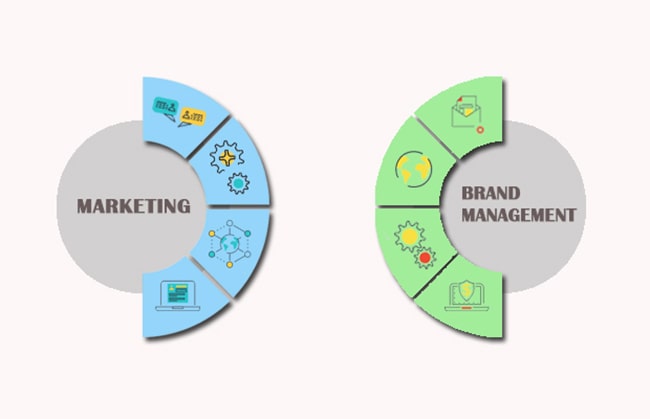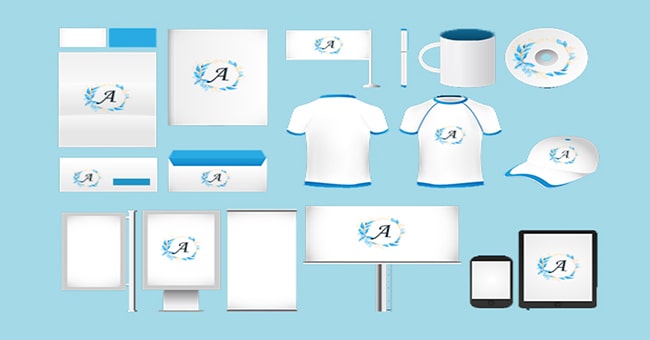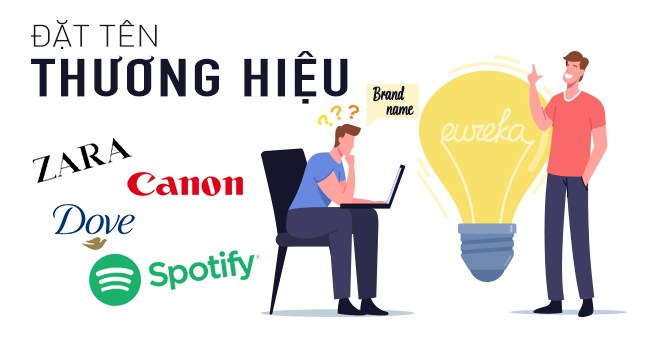If a business is a person, then a brand is its personality. A brand is a living entity, and the business’s job is to help it grow and improve. This job is called brand management. So what are the principles of brand management? In this article Adsmo will provide you with the most basic and necessary knowledge about brand management.
1. What is Brand Management?
According to Wikipedia, Brand Management is the analysis and planning of how a brand is recognized in the market. Developing a good relationship with the target market is essential for brand management.
- Tangible elements of brand management include products, appearance, price, packaging, etc.
- Intangible elements are expressed through customers’ understanding of the brand as well as the relationship between them and the brand.
A brand manager must have an overview of everything. What you need to know about brand management:
- Brand management is a function of Marketing that uses techniques to increase the perceived value of a product line or brand over time.
- Effective brand management will help businesses build a loyal customer base and drive significant profits.
- Brand managers must ensure product or brand innovation, creating brand awareness through price, packaging, logo, color and type text.
- Brand equity is the value a business gains from its name recognition, making the brand the choice of consumers even when compared to other brands with lower prices.
2. The role of brand management
Brand management is closely linked to sales, human resources and customer service, or in other words, it is related to any department that “touches” consumers, customers and potential employees. If done correctly and effectively, brand management will bring the brand key benefits such as:
- Increase sales through increased Customer Advocacy
- Improve overall brand awareness
- Increase pricing leverage
- Help brands scale
- Allow businesses to price higher for your products/services
- Build customer loyalty
- Influence customer purchasing decisions
- Convert satisfied customers into brand advocates
These are the benefits that businesses that implement effective brand management receive. Therefore, try to do it properly to maintain long-term brand reputation.
3. What is the difference between Brand Management and Marketing?

For many people, the “line” between Brand Management and Marketing is quite fragile. Both play an important role in the development of a brand. However, there are clear differences between them:
- While brand management is responsible for creating the brand itself, Marketing handles the individual campaigns to promote the brand and create engagement.
- Brand management helps marketing departments create powerful, emotional brand campaigns using a set of strategic guidelines.
- Brand management is the blueprint (the instructions for maintaining the brand), while Marketing is where that plan is implemented.
4. The Most Effective Brand Management Principles
Brand management includes tangible and intangible components.
4.1 Intangible Components
Intangible components include principles that help businesses measure brand management efforts and achieve successful brand management metrics.
- Brand Awareness
Brand awareness is the level of familiarity of the public and target customers with the brand. Brand awareness is extremely important because customers will not be able to interact or buy a product/service from a brand if they are not aware of the presence of that brand.
- Brand Equity
Brand intangible assets are how consumers evaluate a brand based on experiences, perceptions and associations. Brand equity is important because a valuable brand can be sold at a higher price. At the same time, it increases the brand value in the eyes of investors, shareholders and potential customers.
- Brand Loyalty
Brand loyalty refers to the level of consistency with which customers interact and purchase from a brand. It brings customer satisfaction and builds relationships that keep customers coming back again and again. Brand loyalty is important because it can turn customers into brand ambassadors who promote products for the business best.

- Brand Recognition
Brand recognition is the level at which the target audience can recognize the brand through the logo, slogan, packaging,… without seeing the brand name. Brand Recognition often goes hand in hand with Brand Recall. It is the ability to think of a brand without seeing or hearing any reminders. Brand recognition is extremely important because by recognizing and recalling a brand, consumers will always pay attention to the brand and prioritize choosing your product/service over competitors.
- Brand Reputation
Brand reputation is how the public and target audience perceive the brand’s personality, status, and quality. Reputation can be influenced by internal factors (customer service, product quality, etc.) and external factors (customer reviews, WOM marketing, new mentions, etc.). Brand Reputation is important because it can be the first impression consumers have of a brand.
4.2 Tangible Components
Tangible assets are the tangible components of brand management, the parts of the brand that the target audience can see, experience and remember. Tangible brand assets include any elements of the brand or of a business’s marketing that are seen by the “outside world” – customers, employees or the public.
Brand asset management is the process of creating and maintaining these tangible elements. At the same time, keeping them consistent throughout the branding process.
- Brand name
Brand name is the main identity of the business. Other brand assets may evolve, but the Brand name will never change. Businesses should register their copyright to avoid unauthorized use, intentional copying and brand theft. The Brand name will be reflected in the website domain name and Social Media pages. Keeping them consistent will help customers find and follow the business.
- Logo và Color Palette
Logos and color palettes are the creative representations of a brand. These are important elements of branding when using emotional marketing tactics. If designed properly, they can help businesses attract and convert customers effectively.
- Typography
Typography refers to fonts and “text-based” (text-only interfaces) and how they are used in a brand. These principles apply to the design of branding and marketing assets that represent your brand, such as your website, paid ads, social media posts, etc. All must be consistent, even down to the smallest details like letter spacing.

- Graphics
Graphics include a variety of tangible brand assets, which are anything specifically designed for a brand or marketing activity. Businesses can use them across digital marketing channels or develop them into standalone assets such as slideshows, letterheads, press releases or marketing videos.
Your business’s brand graphics will likely be used by a variety of people, from designers, social media marketers to content creators.
- Digital Marketing Channels
Websites, social media and paid advertising are important and must be done regularly. With millions of people accessing the Internet every day, Digital Marketing channels are the brand assets that potential customers interact with the most. Therefore, they must reflect the brand and be consistent.
- Packaging
For physical products, packaging is an important part of branding. For some customers, packaging can leave their first impression of the brand. In fact, many customers have decided to buy just because they were attracted by the packaging.
Packaging is also the most tangible element, highly experiential. For that reason, the design, color, size and feel of the packaging must all reflect the brand.
- Style Guide
A Style Guide is a document that guides employees, designers, and other businesses on how to use your brand. It is an important brand asset because it informs how all brand assets are used, designed, printed, etc., such as what sizes and colors of logos are allowed and not allowed to be used on marketing materials.
A Style Guide also helps people follow branding guidelines and avoid legal restrictions.
A well-done brand management will help your brand grow and become stronger. Therefore, businesses increasingly consider brand management as a key goal to keep up with market trends and not be outdone by competitors.
See more:
ADSMO – INFORMATION TECHNOLOGY & MARKETING solution, providing customized Enterprise Software solutions, consulting on building digital platforms with the mission:
TOTAL solution, BREAKTHROUGH development – Optimizing COSTS – Increasing PROFITS. We are committed to providing you with:
- Management solutions tailored to your business needs.
- Easy-to-use and efficient systems.
- Professional customer support services.
Contact ADSMO now for a free consultation:
- Address:8th Floor, HD Tower Building – 22 Pho Moi – Thuy Nguyen Ward – City. Hai Phong
- Website: https://adsmo.vn
- Email: info@adsmo.vn
- Hotline: 0356 105 388














